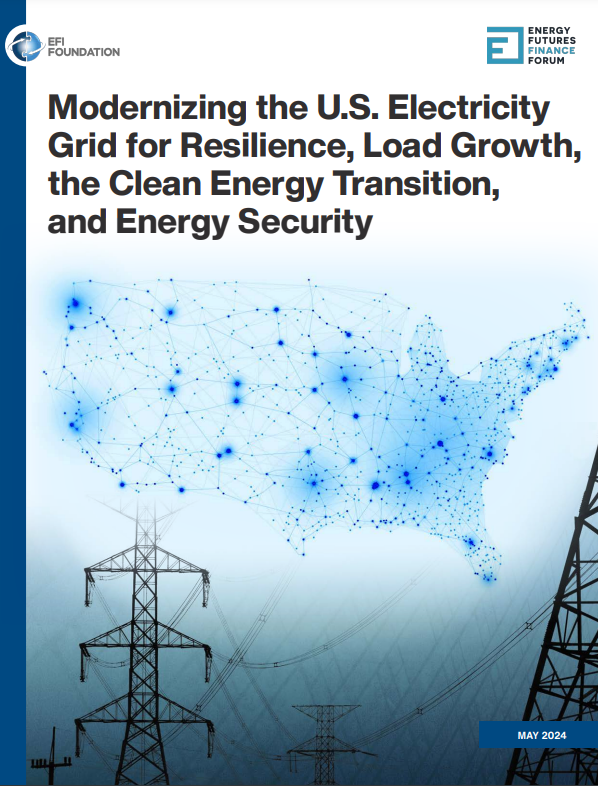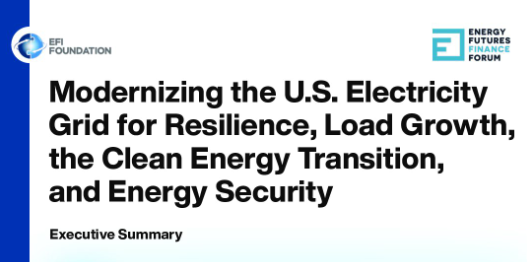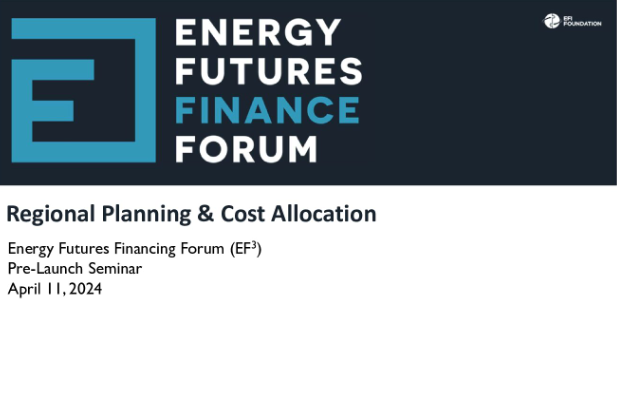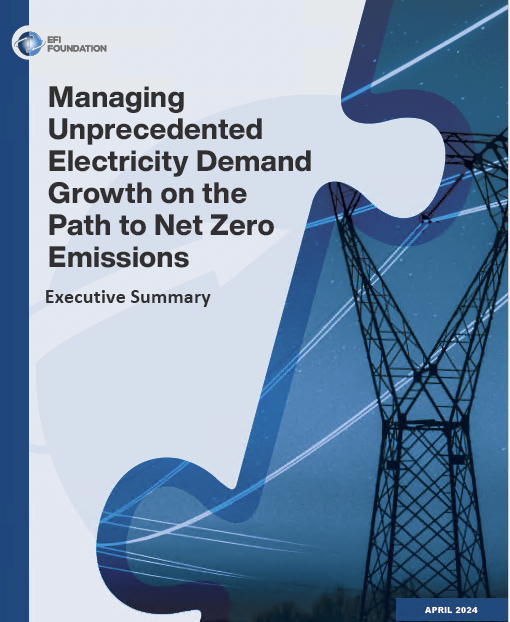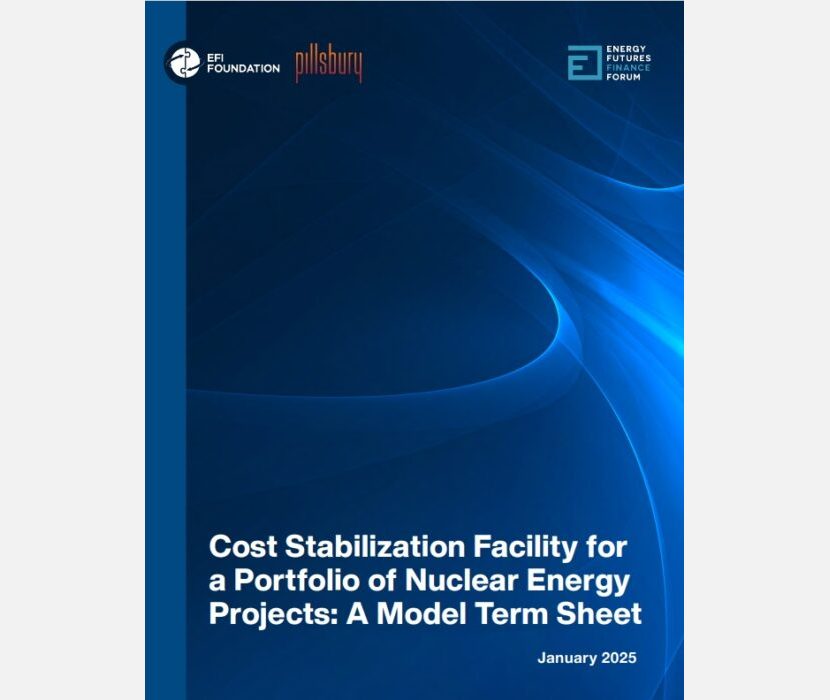Modernizing the U.S. Electricity Grid for Resilience, Load Growth, the Clean Energy Transition, and Energy Security (May 2024) presents analysis from the Energy Futures Finance Forum (EF3) on how a lack of grid transmission capacity impacts the ability to finance and, in turn, deploy clean energy at the right pace and scale. This work addresses one of the most serious financial roadblocks to enabling new electricity-generating capacity to come online: the inability to proactively maintain and expand transmission grid capacity to meet rapidly growing energy demand and enable a steady substitution of clean generation for high-emitting generation.
The need for new transmission capacity in the United States is now so great that the economic and reliability benefits are often sufficient to justify investments in new capacity. Decarbonization is an added benefit. Yet new transmission capacity is not being built at the pace and scale needed.
Federal legislation—including the Inflation Reduction Act, CHIPS and Science Act, and the Bipartisan Infrastructure Law—is unlocking major investments in U.S. manufacturing, reindustrialization, and clean energy. And states increasingly recognize that they are better able to compete for major investments if they can ensure access to reliable, affordable, and clean electricity.
The challenges in building new transmission capacity are twofold: (i) proactively planning for transmission investments, and (ii) getting stakeholders to agree on how to pay for those transmission investments.
The Federal Energy Regulatory Commission (FERC) has proposed a rule to improve regional electric transmission planning and cost allocation that incorporates many best practices.
The EF3 analysis establishes an analytical foundation for FERC to require the adoption of those best practices in its final rule.
Three major conclusions from this analysis should inform transmission planning and cost allocation:
- Long-term regional planning of transmission is crucial for ensuring access to reliable, affordable, and clean power. Planning for future needs over a 20-year time horizon is a crucial component of conventional annual capital budgeting for reliability and congestion. It is not about adding new bureaucracy or top-down industrial policy.
- Transmission benefits ratepayers in a variety of ways, which should be accounted for when evaluating portfolios of projects. Methodologies for quantifying those benefits should be analytically rigorous and analysis results must be transparent. This is particularly important if climate benefits are considered so that stakeholders who do not prioritize climate goals can trust that the non-climate benefits still exceed costs.
- Decisions about who pays for transmission can be simplified by integrating the planning process (i.e., identifying, evaluating, and selecting projects) and the cost allocation process (i.e., deciding how costs should be spread). The cornerstone of planning is a comprehensive evaluation of the costs and benefits to participants and how those are distributed. Logically, a benefit-to-cost analysis cannot be performed conclusively if the method of assigning costs is indeterminate. The ideal scenario is one in which stakeholders reach a consensus before evaluating and selecting potential projects on the algorithm for how costs will be calculated and allocated sub-regionally once a portfolio of projects is selected.
This analysis includes recommendations to strengthen FERC’s final rule and inform its implementation at the regional level, with four specific audiences in mind:
- FERC: Recommendations to strengthen the transmission planning and cost allocation rule.
- Regional transmission stakeholders: Recommendations to inform effective implementation of the final rule.
- U.S. Department of Energy: Recommendations for improving computational methods for long-term projections and enabling greater participation in planning processes.
- Congress: Recommendations for additional federal financial assistance.
Supplemental Material
Related Content
(Share this post with others.)


